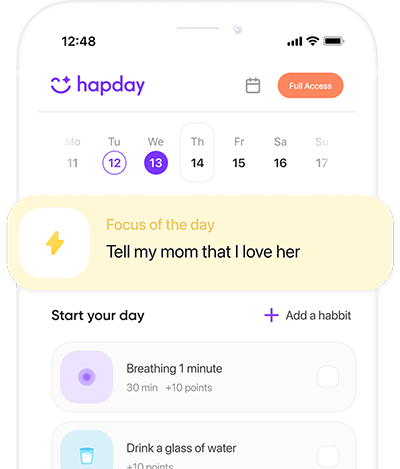Burnout isn’t just a buzzword reserved for high-stress professions or clinical circles anymore; it’s a real issue impacting people across various walks of life. Recognized by the World Health Organization (WHO) as an “occupational phenomenon,” burnout’s influence reaches far beyond the confines of the workplace, affecting our mental, emotional, and physical well-being. In this article, we’ll dig into the psychology of burnout—its causes, symptoms, and how you can rekindle your motivation and zest for life.
Table of Contents
- Understanding Burnout: It’s More Than Just Stress
- The Science Behind Burnout
- Causes of Burnout
- Recognizing the Symptoms
- The Impact of Burnout
- Strategies to Reignite Motivation
- Future Directions and Conclusion
Understanding Burnout: It’s More Than Just Stress
Many people confuse burnout with stress, but they’re quite different. Stress is having too much on your plate—too many responsibilities, too many pressures. Burnout, conversely, is defined by a lack of things—specifically, a lack of energy, enthusiasm, and effectiveness. Renowned burnout researcher Christina Maslach describes burnout in three dimensions: emotional exhaustion, depersonalization, and a reduced sense of personal achievement.
The Science Behind Burnout
Burnout often stems from chronic, unmanaged workplace stress. According to the American Psychological Association, approximately 77% of Americans exhibit physical symptoms from stress, with 33% reporting extreme levels of it. This stress, unchecked, might spiral into burnout. Neuropsychologically, burnout changes our brain’s structure and function. Studies show it affects the emotional centers, notably altering the amygdala and prefrontal cortex—regions vital for emotion regulation and decision-making.
Causes of Burnout
Burnout can arise from an interplay of factors:
- Workload and Work Environment: An overwhelming workload with little control initiates a vicious cycle. The “Journal of Occupational Health Psychology” highlights how high job demands combined with minimal job resources fuel this fire.
- Lack of Control: Feeling trapped or micromanaged only exacerbates feelings of helplessness and burnout.
- Insufficient Reward: Whether it’s financial, social, or intrinsic, when efforts seem futile or unrewarded, demotivation quickly follows. The “Frontiers in Psychology” notes the significance of effort-reward imbalance as a burnout contributor.
- Lack of Community: Human beings thrive on connection. Isolation at work, whether from the absence of camaraderie or supportive colleagues, intensifies stress and burnout risk.
- Work-life Imbalance: Without clear boundaries between work and personal life, personal relationships can sour, and burnout can loom. For instance, the Harvard Business Review found employees unable to detach are twice as likely to succumb to burnout.
Recognizing the Symptoms
Burnout can be stealthy. Its symptoms often mimic other mental health issues, so early identification is key:
- Physical Symptoms: Chronic fatigue, sleep issues, headaches, and digestive troubles might indicate burnout.
- Emotional Symptoms: Cynicism, irritability, and an increased likelihood of anxiety or depression signal trouble. The “Journal of Affective Disorders” highlights burnout’s frequent overlap with depression.
- Behavioral Symptoms: Procrastination, shirking responsibilities, and withdrawing from social interactions are common indicators.
The Impact of Burnout
Burnout leaves no stone unturned in its path, impacting personal lives by deteriorating mental health and straining relationships, and professional lives by reducing productivity. The Society for Human Resource Management estimates stress-related health issues and absenteeism cost the U.S. economy over $125 billion annually.
Strategies to Reignite Motivation
Tackling burnout involves both organizational shifts and personal efforts. Here’s how you can start reclaiming your motivation:
- Mindfulness and Meditation: Mindfulness exercises like meditation and yoga can diminish stress and enhance emotional control. Research in “Clinical Psychology Review” confirms these practices significantly alleviate burnout symptoms.
- Cognitive Behavioral Therapy (CBT): By reshaping negative thought patterns, CBT effectively reduces burnout symptoms. According to “Behaviour Research and Therapy,” CBT promotes better coping mechanisms and improved well-being.
- Time Management and Boundary Setting: Mastering time management can prevent burnout. Techniques like the Pomodoro Technique or Eisenhower Box help prioritize tasks. The “Journal of Applied Psychology” states employees with clear work-life boundaries experience less burnout.
- Social Support: Building strong networks and seeking encouragement from peers, friends, or family creates an effective buffer against burnout.
- Physical Activity: Regular exercise relieves stress. The “American Journal of Health Promotion” underscores how physical activity boosts mood and energy while reducing burnout symptoms.
- Career Coaching and Professional Development: Career coaching might realign personal values with career paths, revving up motivation and satisfaction.
- Organizational Changes: Employers should prioritize wellness, endorse flexible schedules, and promote a supportive culture, significantly reducing burnout risks.
- Self-Compassion: Being kind to oneself, acknowledging imperfections, and forgiving mistakes build resilience. “Self and Identity” research identifies self-compassion as a surprising, powerful shield against burnout.
Future Directions and Conclusion
As burnout becomes increasingly widespread, continuous research and interventions are critical. Future studies should evaluate long-term strategy effectiveness and technology’s evolving role in both exacerbating and easing burnout.
In conclusion, understanding burnout and utilizing proven strategies can help rekindle motivation and improve life’s quality. Managing burnout benefits individuals, businesses, and society, facilitating healthier, more productive environments.


